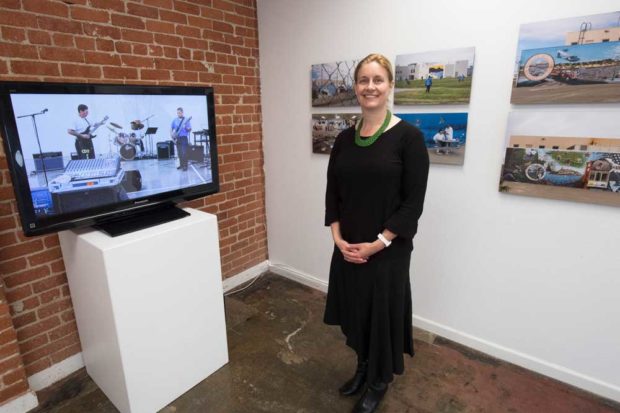
By Peter Maiden
One would think that art created by inmates in a facility such as Avenal State Prison would hang, at best, on a wall near the chow line. However, Doug Snell, a lieutenant in the California Department of Corrections and Rehabilitation, got the idea that art by Avenal prisoners could be shown in public. He was thinking it could be displayed on a wall at a café in Fresno. He shared this concept with Professor Emma Hughes, chair of the Criminology Department at Fresno State, and she was enthusiastic about the project.
In December 2017, Hughes went to the Fresno State Department of Art and Design and was told it would be possible to use the M Street Gallery, an attractive space downtown, in April 2018. Avenal State Prison Warden Rosemary Ndoh, who holds a degree in education from Fresno State, gave Hughes the OK. The nature of the exhibit aligned with the current theme of the Fresno State Center for Creativity and the Arts, “Voice and Silence: Expressions of the Human Spirit and Community.” The Center became a source of funding for the project.
With support from the deans of the College of Social Sciences and the College of Arts and Humanities, Hughes went all out putting the exhibit together between December and April. The exhibit was titled “Insider Art: Exploring the Arts within Prison Environments” and it included paintings and sculpture by prisoners, as well as videos of music and theater from within the prison.
A series of photographs by Fresno State Professor Neil Chowdhury showing different aspects of art within Avenal was also shown. Some photographs showed stunning murals on Avenal’s walls. All of this was evidence of an overall positive orientation toward the arts in the prison. One of the inmates in a video said the arts program gave him a basis for adapting to the outside world as he looked toward his release.
Public interest in the exhibit was greater than anticipated. An April 4 panel discussion on the Fresno State campus that included Snell and Ndoh was standing room only. During ArtHop on April 5, viewers were lined up outside the gallery to get in.
Inmates’ families came from as far away as Los Angeles. The inmates cannot receive money for their artwork, but some volunteered to let it be sold to fund the purchase of art supplies for the prison; in the first week, 12 pieces had been sold on that basis. A guest book at the gallery was filling with comments to be shared with the prisoners. The exhibit closed April 22.
